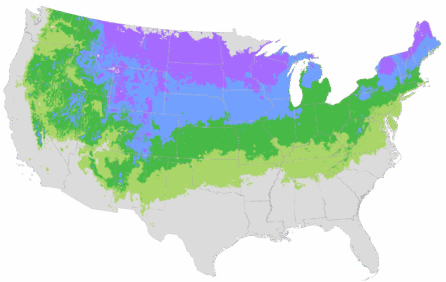You're growing in this Zip Code:
Change LocationWhitebarked Himalayan Birch
Betula utilis var. jacquemontii
Retailers Near You
No Retailers found within 50 miles of your zipcode
Be Inspired: How to Use this Plant
| Bloom Time | Spring |
|---|---|
| Deciduous/Evergreen | Deciduous |
| Special Features | Attractive Bark, Fall Color, Fast Growing, Benefits Birds |
| Problems/Solutions | Deer Resistant, Erosion Control |
| Growth Rate | Fast |
| Growth Habit | Pyramidal |
| Landscape Use | Windbreak |
| Design Ideas | Excellent tree for very large home sites, parks, and open spaces. A problem solver for low-lying sites too wet for many other species. An important component of the wetland wild garden and for re-vegetating disturbed sites along river banks that benefit from extensive root stabilization of eroding banks. |
| Flower Color | Yellow |
| Foliage Color | Green |
| Companion Plants | Boxwood (Buxus); Lenten Rose (Helleborus); Sweet Flag (Acorus); Grecian Pattern Plant (Acanthus mollis); Curly Sedge (Carex) |
| Care Instructions | Thrives in deep, loamy, moist but well-drained soil amended with sand or gravel, but highly adaptable. Water deeply, regularly during the first few growing seasons to establish an extensive root system; once established, maintain evenly moist soil. Feed with a general purpose fertilizer before new growth begins in spring. |
| Lore | This species is considered to bear the most beautiful white bark of all the birches. The flaky, peeling bark of B. utilis was at one time used as a writing medium. |
| Bloom Time | Spring |
|---|---|
| Deciduous/Evergreen | Deciduous |
| Special Features | Attractive Bark, Fall Color, Fast Growing, Benefits Birds |
| Problems/Solutions | Deer Resistant, Erosion Control |
| Growth Rate | Fast |
| Growth Habit | Pyramidal |
| Landscape Use | Windbreak |
|---|---|
| Design Ideas | Excellent tree for very large home sites, parks, and open spaces. A problem solver for low-lying sites too wet for many other species. An important component of the wetland wild garden and for re-vegetating disturbed sites along river banks that benefit from extensive root stabilization of eroding banks. |
| Flower Color | Yellow |
| Foliage Color | Green |
| Companion Plants | Boxwood (Buxus); Lenten Rose (Helleborus); Sweet Flag (Acorus); Grecian Pattern Plant (Acanthus mollis); Curly Sedge (Carex) |
| Care Instructions | Thrives in deep, loamy, moist but well-drained soil amended with sand or gravel, but highly adaptable. Water deeply, regularly during the first few growing seasons to establish an extensive root system; once established, maintain evenly moist soil. Feed with a general purpose fertilizer before new growth begins in spring. |
|---|
| Lore | This species is considered to bear the most beautiful white bark of all the birches. The flaky, peeling bark of B. utilis was at one time used as a writing medium. |
|---|
Retailers Near You
No Retailers found within 50 miles of your zipcode
Retailers Near You
No Retailers found within 50 miles of your zipcode
Buy Online
We cannot currently ship this product to your zip code.
About Us
We have been pioneers and craftsmen in the art of growing plants for nearly
100 years. Since our founding in Southern California by Harry E. Rosedale, Sr.
in 1926, we have been absolutely dedicated and obsessed with quality.
We have been pioneers and craftsmen in the art of growing plants for nearly 100 years. Since our founding in Southern California by Harry E. Rosedale, Sr. in 1926, we have been absolutely dedicated and obsessed with quality.







